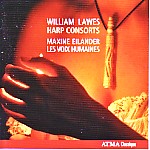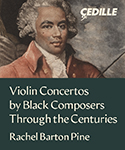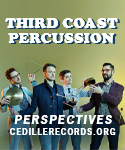The viola da gamba usually sounds to me like a dying cow, but William Lawes was a very interesting composer, consistently interesting melodically and harmonically. In addition, the less dusky timbre of the harp and the baroque violin makes a very effective foil to the gambas in these invariably inventive pieces. It’s an open question just how complete the consorts are as they have come down to us. Some, such as Concerto 7, have one brief movement, while others, such as No. 3, are complete baroque dance suites. Most interesting are the movements in variation form (“divisions”) such as we find in Consorts Nos. 8, 9, and 10, where the interplay between harp, violin, and gamba reaches delectable heights of invention.
The reason that these pieces have not previously appeared on disc in a complete collection has to do with the amount of reconstruction necessary to present the entire series in its most complete form. Trust me: you won’t be able to tell which bits feature some conjectural filling in. The editorial work has been done very sensitively, and the performances are “authentic” but never at the expense of musicality. The players of Les Voix Humaines and harpist Maxine Eilander really “play off” of each other, and they are extremely well recorded. It makes good sense to arrange the consorts in sets according to key (G major, D minor, D major, and G minor), as there seems to be no particular point to their numbering. It truly sounds as if everyone involved is having a very good time, and you will too. [9/15/2008]
































